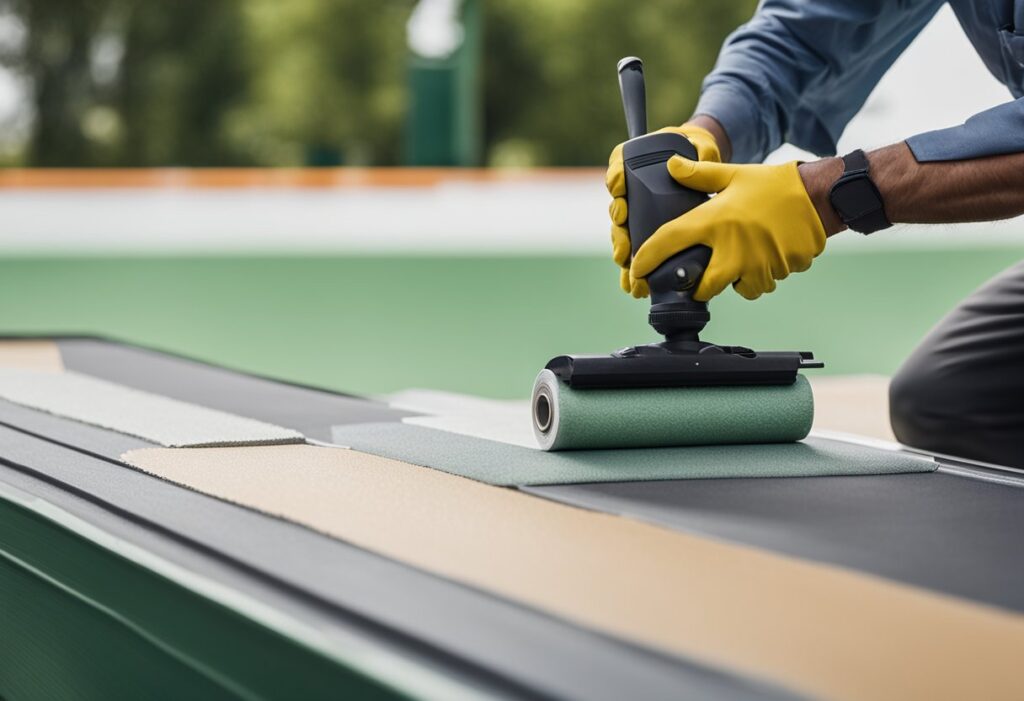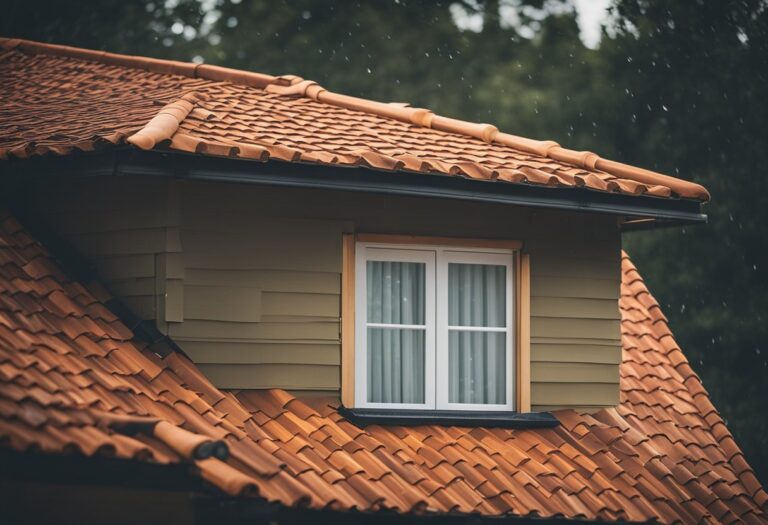Roll roofing adhesive is a type of waterproofing material that is used in roofing systems. It is designed to adhere to the surface of the roof and provide a strong, durable bond that can withstand the elements. Roll roofing adhesive is typically applied in liquid form and then allowed to dry, creating a solid, waterproof seal.

One of the main advantages of roll roofing adhesive is its ease of application. Unlike other roofing materials, which may require specialized tools and equipment to install, roll roofing adhesive can be applied using a simple brush or roller. This makes it an ideal choice for DIY roofing projects, as well as for professional roofing contractors who need to complete jobs quickly and efficiently.
Another benefit of roll roofing adhesive is its affordability. Compared to other roofing materials, such as shingles or tiles, roll roofing adhesive is relatively inexpensive. This makes it a popular choice for homeowners who are looking to save money on their roofing projects without sacrificing quality or durability. Overall, roll roofing adhesive is a versatile, cost-effective solution for anyone in need of a reliable roofing material that can stand up to the elements.
Roll Roofing Adhesive Basics

Composition and Properties
Roll roofing adhesive is a type of waterproof adhesive that is made from asphalt, solvents, and organic fibers. It is designed to bond layers of asphalt in built-up coated base roofing sheets, and can also be used to bond roofing felt and other roofing materials.
Roll roofing adhesive is typically applied using a brush or squeegee, and can be used for both horizontal and vertical applications. It is a premium quality adhesive that is resistant to water, weather, and other environmental factors, making it ideal for use in a wide range of roofing applications.
Types and Uses
There are several different types of roll roofing adhesive available, each with its own unique properties and uses. Some of the most common types of roll roofing adhesive include:
- Brush Grade: This type of adhesive is typically used for vertical applications, such as bonding roofing felt to walls or other vertical surfaces.
- Squeegee Grade: This type of adhesive is typically used for horizontal applications, such as bonding roofing felt to flat or low-slope roofs.
- Fibered: This type of adhesive contains additional organic fibers, which help to reinforce the bond between the roofing material and the substrate.
Roll roofing adhesive is commonly used in a variety of roofing applications, including residential and commercial roofing projects. It is an essential component of built-up roofing systems, and is also used in conjunction with roofing felt, asphalt shingles, and other roofing materials. When properly applied, roll roofing adhesive provides a durable, long-lasting bond that helps to protect the roof from water, weather, and other environmental factors.
Application Techniques

When it comes to applying roll roofing adhesive, there are a few key techniques to keep in mind. Proper surface preparation, adhesive application methods, and curing and setting times are all important factors to consider.
Surface Preparation
Before applying roll roofing adhesive, it is essential to properly prepare the surface. This includes cleaning the surface to remove any dirt, debris, or loose material that could interfere with the adhesive bond. It is also important to ensure that the surface is dry and free of any moisture, as this can also impact the effectiveness of the adhesive.
Adhesive Application Methods
When it comes to applying roll roofing adhesive, there are several methods to choose from. One popular option is to use a notched squeegee or 4-knot roofing brush to apply the adhesive in a uniform consistency. Another option is to spray the adhesive on using a sprayer or other application tool. It is important to follow the manufacturer’s instructions for the specific adhesive being used to ensure proper application.
Curing and Setting Times
Once the adhesive has been applied, it is important to allow sufficient time for it to cure and set. This can vary depending on the type of adhesive being used, as well as the environmental conditions. In general, it is recommended to allow at least 24 hours for the adhesive to fully cure and set before proceeding with any additional roofing work.
By following these application techniques, it is possible to achieve a strong and durable bond with roll roofing adhesive.
Safety and Handling

Health Precautions
Roll roofing adhesive is a powerful adhesive that can cause health problems if not handled properly. It is important to take the necessary precautions to avoid any potential health risks. The following precautions should be taken:
- Avoid direct contact with skin, eyes, and clothing. Wear protective gloves, goggles, and clothing when handling the adhesive.
- If the adhesive comes into contact with skin, wash the affected area with soap and water. If it comes into contact with eyes, rinse thoroughly with water for at least 15 minutes and seek medical attention.
- Avoid inhaling the adhesive fumes. Use the adhesive in a well-ventilated area or wear a respirator to prevent inhalation of fumes.
- If swallowed, do not induce vomiting. Seek medical attention immediately.
Storage and Disposal
Roll roofing adhesive should be stored in a cool, dry place, away from direct sunlight and heat sources. It should be stored in its original container, tightly sealed to prevent evaporation and contamination.
When disposing of the adhesive, follow the manufacturer’s instructions. Do not pour it down the drain or throw it in the trash. Contact your local waste management facility for proper disposal instructions.
It is important to note that the adhesive is flammable and should be handled with care. Keep it away from sources of ignition, such as open flames, sparks, and heat sources. Do not smoke while handling the adhesive.
By following these safety and handling precautions, you can ensure that you use roll roofing adhesive safely and effectively.
Maintenance and Repair

Regular Inspection
To ensure the longevity of roll roofing adhesive, it is important to conduct regular inspections. This will help identify any potential issues before they become major problems. Inspections should be conducted at least twice a year, preferably in the spring and fall. During inspections, it is important to look for any signs of damage, such as cracks or tears in the roofing material, as well as any signs of wear and tear.
Repair Procedures
If damage is found during an inspection, prompt repair is necessary to prevent further damage. The repair procedures for roll roofing adhesive depend on the type and extent of the damage. For minor damage, such as small cracks or tears, a patch can be applied to the affected area. The patch should be made of the same material as the roofing and should be applied using roofing cement.
For more extensive damage, such as large tears or holes, the damaged section of the roofing may need to be replaced. This can be done by cutting out the damaged section and replacing it with a new piece of roofing material. The new piece should be secured in place using roofing cement.
It is important to note that repairs should only be attempted by those with experience in roofing repair. Inexperienced individuals may cause further damage or create safety hazards. If in doubt, it is best to consult a professional roofing contractor.
By conducting regular inspections and prompt repairs, roll roofing adhesive can provide years of reliable service.






